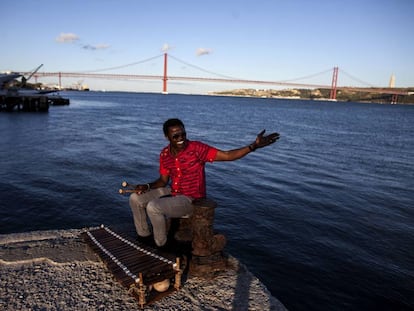The scientists trying to find the “cure” for old age
Could we live to 140? 1,000? Is there a limit? Scientific research into extending the human lifespan is being backed by Silicon Valley giants such as Google and Facebook

Sidestepping Darwin
With the lean look of a long-distance runner, scientist Juan Carlos Izpisúa Belmonte whispers rather than talks as he draws on his childhood in the small southeastern Spanish town of Hellín to explain his life’s work. “I had a fairly happy childhood, but it was difficult,” he says. “My mother had no money and didn’t know how to read or write. She brought up three children by herself because my father wasn’t around and never had been. It was very hard on her. Perhaps watching her look after my sick grandparents, devoid of any kind of hope, made me ask questions such as, ‘What are we doing here? What’s it all about? What is the point of our lives?’ What I do now is try to understand how life unfolds; how 250 kinds of cells can be generated from one cell to make a human being. And how this can get out of control, leading to death or illness.”
One of the most distinguished scientists to come out of Spain, Izpisúa has spent 25 years working at the Gene Expression Laboratory of the Salk Institute for Biological Studies in southern California, which has produced more than a dozen Nobel Prize winners. Leading a research team of 25 scientists, he is developing strategies that pave the way for stem cell therapies with a view to treating premature aging and other age-related diseases.
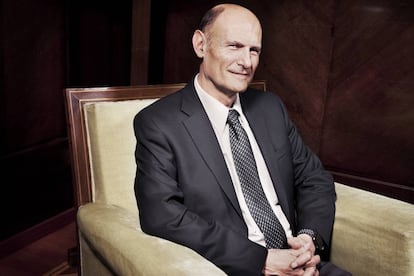
Fueled by billions of techno-dollars from Silicon Valley, it is one of the most exciting areas of scientific research today. Now, aging itself is being referred to by scientists as an illness. Izpisúa, for example, speaks about “curing” old age. In his lectures on the international conference circuit, he illustrates the process with three images: one of Arnold Schwarzenegger as a child, another of the actor-turned politician in his prime when he played Conan the Barbarian and a third as he is now – his massive buffed-up body a shadow of its former self. The point: no one escapes.
But then Izpisúa challenges this assumption: “Is it really a one-way street or could we reverse the process?” he asks before he gets down to business, and starts to explore a terrain bordering on science fiction – “chimeras,” genetic mutations that, in Greek mythology, gave us monsters that combined the parts of different animals. Izpisúa’s examples are somewhat less dramatic, starting with a mouse that has been injected with cells from a rat in its embryonic state. These injected cells manage to survive in the new host and differentiate. Izpisúa says that the small rodent is perhaps “the oldest chimera on the planet.”
Izpisúa and his team repeated the experiment but this time injecting a pig with human cells. These cells also divide and differentiate. He has even injected progenitor cells taken from a human kidney into a pig during pregnancy. The result? The animal starts to develop a human kidney. “We are still in the preliminary stages,” says Izpisúa. “It’s very possible that all these experiments will end in an accident. There’s still a lot of work to be done in the laboratory.”
One way of tackling illnesses associated with aging is by generating cells, tissue, and organs in the laboratory with the aim of extending life. Another is to modify the genome and pregenome – the inheritable traits of an organism. Izpisúa has been working in this field for some time, inspired by the Japanese Nobel Prize-winner Shinya Yamanaka, who managed to return adult cells to their embryonic state. Izpisúa is optimistic. He talks about dying cells being rejuvenated, muscles regaining their elasticity, cut-and-paste genetics, and modifying embryos to avoid problems in future generations. Our existence, he concludes, can be summarized in four billion years of random mutations and natural selection. Until now, that is. “We can sidestep Darwin and change humanity’s evolutionary path,” he claims.
Living to 140
In 1900, life expectancy in Spain was 35. Now it’s over 83. But more people die than are born. Armed with data, the molecular biologist María Blasco forecasts “a very different” society for the future. “There will be fewer of us than there are now, but we will live much longer,” says the head of the Spanish National Center for Cancer Research, who has spent more than 20 years studying microscopic DNA structures and the molecules known as telomeres.
Telomeres protect chromosomes and their length acts as a biomarker – an aging and health yardstick, according to Blasco, who looks vaguely like a grunge singer. As cells divide over time, the telomeres get shorter and shorter until they are so short our cells can no longer reproduce. The human body tries to stop this process naturally with another enzyme called telomerase – a sort of reset button for the telomere. The telomerase is the key to Blasco’s research. In 2008, she and her team injected telomerase into mice extending their lives by 40%, suggesting that it has the capacity to reverse the aging process.
In 2008, Blasco extended the lives of mice by 40%, suggesting you can reverse the aging process
“If we did this to humans, it would be possible to reach 130 with an almost clean bill of health,” says Blasco. “Obviously we can’t extrapolate because we are not mice, but that’s the thinking.”
In 2016, Blasco published a book called Die Young at 140. Co-written with journalist Mónica G. Salomone, it attempts to separate the real anti-aging science from the pseudoscience, covering milestones such as the first experiments of calorie restriction in rodents in the 1930s to Caenorhabditis elegans – a kind of transparent worm that was able to live 50% longer thanks to genetic engineering carried out by Cynthia Kenyon in 1993.
Kenyon now works in Calico, an offshoot of Google dedicated to research on aging. Started in 2013 with a budget of €1.26 billion – double that of the Spanish National Research Council (CSIC) – the project is highly confidential. Of course, the quest for longevity fascinates the tech sector. In one of his recent visits to Spain, Google’s Executive Chairman of Alphabet Eric Schmidt arranged a meeting with Blasco seeking an update on her research.
But Blasco’s international renown is largely due to The Hallmarks of Aging, which she co-authored in 2013, flagging up the molecular signs of aging. “It was an intellectual exercise,” she observes. “The idea is that the molecular cause of age-related illness is the same as aging itself. It changed the paradigm.”
Over 1,000
British gerontologist Aubrey De Grey, 54, takes a sip of wine and places his glass on the floor before explaining the means and goals of his SENS Research Foundation – set up with most of the €11.5 million left to him by his mother. “We develop strategies that will turn back the clock on aging,” he says, adding that he has a pretty clear idea of the path to take, a road he calls “focus on maintenance.”
According to De Grey, human deterioration is comparable to the wear and tear on a car. “It’s more a question of physics than biology,” he says. We get old through use. If we could repair what we wear out as we go, our prospects would be the same as a Ford T, which was built to last for 10 years but is still going strong a century later. It’s a matter of cleaning, making adjustments and changing parts. In other words, regenerated cells, engineered tissue and inserting nanobots inside us in a relentless rejuvenating cocktail. When asked how long a human being could keep going with this kind of maintenance, De Grey replies: “There’s really no limit.”

De Grey’s appearance lies somewhere between a hippy and a tramp. But when he steps up to the podium to expound on his theories, he assumes the air of a visionary. Close up, you can see the grease spots on his shirt. His eyes are red, his face blotchy. His passion for both drinking – something he claims doesn’t interfere with his judgment – and women – he advocates polyamory and until recently had a wife and two lovers – are both well-known.
De Grey studied computer science at Cambridge where he met his wife, fruit fly geneticist Adelaide Carpenter. Years later, he gained a doctorate in biology. Today he is probably the most recognizable face of this particular branch of science. He has appeared in numerous articles with headlines such as “We will be able to live to 1,000.” His TED talks attract hundreds of thousands of viewers but, according to one prominent scientist, his credibility within the scientific community itself is zero. In 2005, the molecular biology journal EMBO published an article signed by 18 scientists criticizing his work and relegating him to the realms of fantasy.
According to Aubrey De Grey, “there’s really no limit” to how long humans can live
De Grey is also co-founder of the Methuselah Foundation. Both SENS and Methuselah fund experiments that are labeled “high risk – high reward.” The SENS headquarters are next to those of Google and Facebook, in Mountain View, California. “This is the place to be if you want to raise money,” he says. “We are talking about very ambitious goals. And ambitious goals are hard to fund through normal channels. The best thing is to get the interest of rich, ambitious people who set the bar high and follow their dreams.”
In 2006, for example, Peter Thiel, the co-founder of PayPal, donated €3 million – the target is €42 million. “But it’s not just a matter of money,” says De Grey. “There’s general excitement. And a greater realization that this is not science fiction, it’s a legitimate area for technology to conquer. And that’s what we’re going to do. We’re taking the first step. We have to work as quickly as we can and save as many lives as we can.”
‘Sexy’ scientific sector
“Aging has become the ‘sexy’ aspect of science,” says João Pedro de Magalhães, molecular biologist at the University of Liverpool. “Google is involved. Everyone wants to be part of it.”
Magalhães’ genetic study of the northern whale – the mammal with the longest life span on earth, living up to 200 years without developing cancer – was co-financed by De Grey’s Methuselah Foundation. “I approached the British government, but they rejected the project,” says Magalhães. “They said, ‘What are you going to find out. It’s too risky.’ But these people in the United States [Methuselah] thought is was exciting. ‘You never know what you might find,’ they said. ‘It might be something incredible’.”
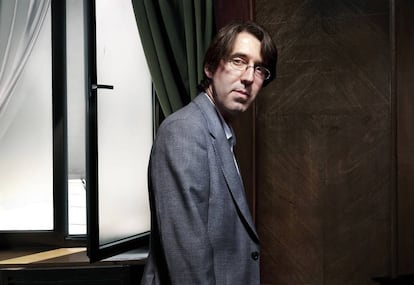
It makes sense, of course. Izpisúa, for example, managed to develop a human kidney in a pig following research on the axolotl, or Mexican salamander, that has the unique capacity to regenerate amputated limbs. As Magalhães points out: “If we manage to shine some light on the tricks innate in other species, maybe we can imitate them.” In his opinion, De Grey has been a pioneer who has raised awareness of this field of work. “But I don’t share all his claims,” he says. “He believes that aging can be cured in 20 years.”
While Magalhães believes such a cure may be possible, he considers it a far longer-term prospect. “We will be able to cure all things related to aging,” he says. “That could perhaps happen within a century. And it doesn’t mean there will be an [anti-aging] injection like penicillin. It won’t be that simple. It will be a combination of various treatments.” Meanwhile, the goals remain modest, such as discovering “a medicine or dietary solution to slow the process down by 10%; and that in itself will be a commercial, social and medical phenomenon.”
Magalhães doesn’t just study animals. He also studies humans, using the UK Biobank where he has access to the genomes of 100,000 Brits. He also carries out studies on American families with members aged 100 and over. “We want to discover why some people live longer than others,” he says. “Longevity is a mystery. There will be huge gains if we can crack it. There is tremendous potential but few answers. We know how to manipulate aging in animals and that inspires us. If we can work it so that worms live 10 times longer, it might not be as easy in humans, but the potential is there.”
The business of immortality
Izpisúa, Blasco, De Grey, and Magalhães meet in Madrid at the end of summer at the first “International Longevity and Cryopreservation Summit.” The conference lasts two days and is held in the CSIC, attracting prominent scientists, futurists and freaks, as conference organizer and Vidaplus President Txetxu Mazuelas, refers to them. The scientific world and the futuristic world inevitably clash. One of the most heated debates is on the cryopreservation of human beings – a kind of plan B that puts humans on ice while they work out the secret to eternal life.
For experts such as surgeon Javier Cabo, who performed the first heart transplant in a newborn in Spain in 1994, there is no evidence that cryopreservation would work in humans. “There is no scientific criteria,” he says. “It’s another funeral ritual. Like the Egyptian rite of embalming [the corpse]. But using ice.”
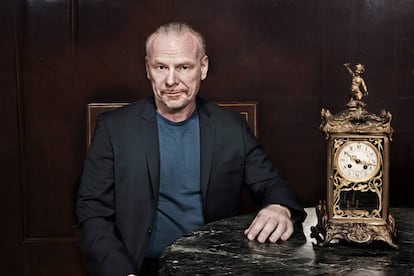
Still, cryopreservation companies are springing up everywhere. The biggest is the American giant Alcor run by Max More, which has frozen 150 patients since the 1970s and has more than 1,000 people signed up to be put on ice when they die. The practice is illegal in Spain, but in Arizona, it is interpreted as donating your body to science.
According to More, the company is not profit-driven, but patients have to cough up a minimum of €170,000 to pay for the process, maintenance and the resurrection should it take place – though there are no guarantees on this score.
“If we want to leave Earth and our solar system to visit the stars, we need cryopreservation,” says Valerija Udalova from CryoRus, which has frozen 53 people and 22 dogs. She admits that so far they have not tried to resuscitate any of the corpses. Neither, for that matter, has Alcor.
“We don’t expect to be able to do so for decades,” says More. “We would fail. We can’t even do it on a whole cryopreserved organ yet. We can resuscitate corneas, skin and cells and, of course, embryos. But things get complicated with an entire organism.”
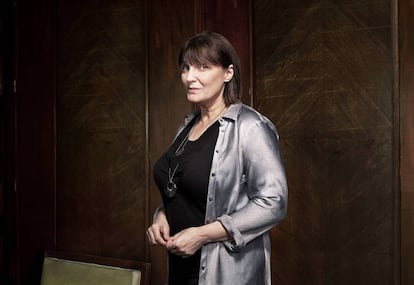
The champions of this practice often cite the breakthroughs made by researcher Greg Fahy in the vitrification and reheating of complex organs. In his conference, Fahy often reviews a selection of his resurrected elements, from mice cells and human corneas to a section of a rabbit’s brain. His experiments in the 21st Century Medicine institute are financed by the anti-aging supplements company, Life Extension. Also linked to Alcor, this company financed the construction of the Perpetual Life Church in Florida – the main temple for transhumanists, people who believe the human being in its current form is not the end of the species’ development but a relatively early phase.
The movement has become the torchbearer in the quest for immortality. According to an essay called The Transhumanist Revolution, by philosopher and former French education minister, Luc Ferry, transhumanists are in favor of new technologies and the intensive use of stem cells, reproductive cloning, hybridization, genetic engineering and germinal manipulations, which can irreversibly modify our species with an end to improving the human race.
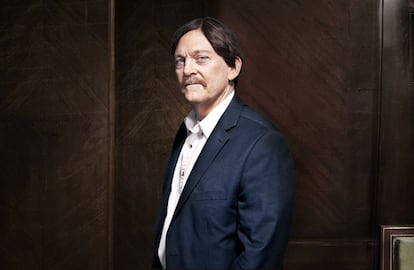
Ferry is one of the few people who have taken transhumanism seriously, a trend he says that “is beginning to come to Europe and which will become stronger in the next 10 years.” According to Ferry, the movement consists of serious scientists, successful companies, and controversial figures such as Raymond Kurzweil, president of Singularity University, a center for transhumanist research, funded by Google and others in Silicon Valley.
A futurist, Kurzweil is Engineering Director at Google and spends his free time deliberating the techno-fabrication of the future human being. The revolution’s first stage concerns medical breakthroughs on aging, in the same vein as his buddy De Grey.
According to Kurzweil, when we have cracked super-longevity, in the second to last stage nanobots will connect our brains to an exocortex – a hypothetical artificial external information processing system – multiplying its capacity. Having a body, as we know it, will then be surplus of requirements, he told the New Yorker. This will happen in 2045, when singular technology believes that artificial intelligence will take over the human race.
Longevity is a mystery. There will be huge gains if we can crack it Molecular biologist João Pedro de Magalhães
When Singularity University was inaugurated in 2008, Larry Page, Google’s CEO said, “We need to train people to change the world.”
Max More is one of the founders of the transhumanist movement. He explains that in the 1980s most transhumanist claims were dismissed as unrealistic. “Nowadays people like Elon Musk and Bill Gates are involved in artificial intelligence and anti-aging,” he says.
The founder of Tesla and Space X, Musk set up Neuralink, a company that is working on technology capable of engineering electrode implants in the human brain. Meanwhile, Microsoft has started a project to cure cancer in 10 years via artificial intelligence. Even Facebook’s Mark Zuckerberg and his neurobiologist wife Priscilla Chan have said they will pledge more than €2.5 billion to cure all sorts of illnesses, combining biology with computer science.
More, whose original surname was O’Connor, is 53. He studied philosophy at Oxford and got his doctorate after writing a dissertation on death. He then became involved in what was then an underground movement, publishing articles and manifestos on transhumanism.
It will be decades before scientists can resuscitate a cyropreserved body
In Extropian Principles Version 3.0, he writes: “We view humanity as a transitional phase in the evolution of intelligence. We advocate using science to accelerate our move from human to a transhuman or posthuman condition. We do not accept the undesirable aspects of our condition. We question the natural and traditional limits of our possibilities. We foresee that life will extend beyond the confines of Earth to inhabit the cosmos.”
Luc Ferry, now a member of France’s Economic, Social and Environmental Council (CESE), believes this field of research needs urgent regulation, due to the moral and ethical dilemmas it presents, including for example, the possibility of experiments falling into the hands of a rich and irresponsible technophile; that genetics that could divide the world into superhumans and inferior humans; or the possibility of a geopolitical situation with people’s rights seriously compromised. “If everything is permitted,” says Ferry, “we are in danger of creating monsters, hybrid human beings that are half man, half machine, an animal that has nothing to do with humanity, an idea that most of us find terrifying.”
But More sees only potential. “Imagine if we could be healthy for thousands of years. Ultra-mature beings. It’s a heartening thought.”
So could we be contemplating the death of death? Izpisúa smiles. “The most mindful thing I can say as a scientist is that they are mistaken.”
English version by Heather Galloway.


